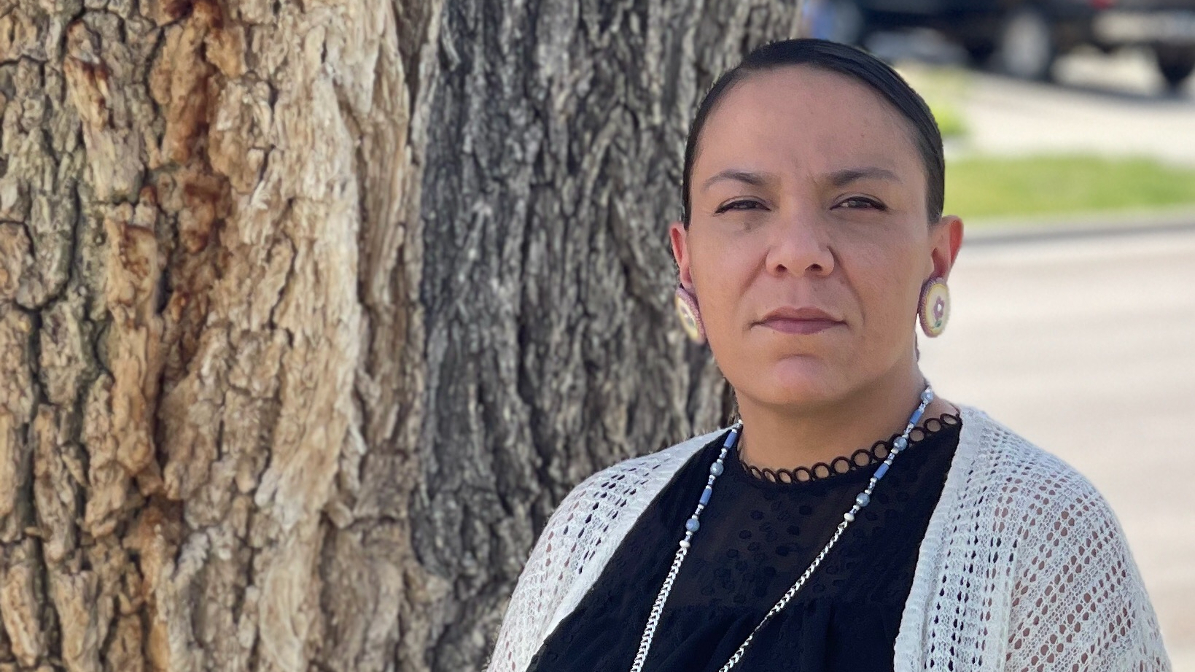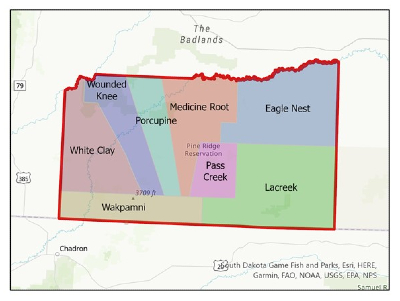Graduate Student Spotlight: Elisha Yellow Thunder

The area of interest for Elisha’s graduate research is located on the ancestral territories of the Oglala Lakota – Oceti Sakowin, located within the Ft. Laramie 1851 & 1868 treaty boundaries of the Wazi Ahanhan Oyanke (Pine Ridge Indian Reservation) in South Dakota.
When her first-born was diagnosed with kidney failure and received the first of two transplants at age 9, Elisha Yellow Thunder wondered if her diagnosis had to do with the water quality near their home. Due to these experiences and the potential impact of this research on her community, Yellow Thunder felt determined to study the risk assessment of arsenic mobilized nitrates in the Arikaree aquifer on the Pine Ridge Reservation.
Her hypothesis is that nitrates are becoming mobile in the water due to the arsenic found in the geological formations. With the arsenic mobilized nitrates being carcinogenic, she feels it is worthwhile to look at the rangelands and formations and understand the potential correlations.
In 2019, Yellow Thunder was a senior at Oglala Lakota College (OLC) in Kyle, South Dakota, when Dana Gehring, a faculty member at OLC, encouraged her to pursue a graduate degree. She applied and was accepted to South Dakota State University (SDSU), where she now studies natural resource management.
“[Without EPSCoR], I don’t think I would be where I am today … living a life I never thought was possible growing up. I cannot express how much EPSCoR has helped me to achieve my dreams. I am forever grateful to EPSCoR and my OLC mentors.”
Elisha Yellow Thunder, Graduate Researcher, South Dakota State University

Objectives: 1. Develop a risk assessment model of vulnerabilities in the Arikaree Aquifer using MODFLOW (usgs.gov), a modular hydrologic model. 2. Database engineering for the Oglala Sioux Tribe.
She said her research has benefitted from EPSCoR in almost too many ways to count. With the NSF EPSCoR Track-1 project providing financial support, Yellow Thunder was able to pursue her graduate degree along with a research assistantship.
Everything Yellow Thunder does is in pursuit of a better way of life for her community on the reservation. She hopes to implement effective research in Indigenous communities and create a research environment that is conducive to the needs and wants of her tribe’s community members and elders. For Yellow Thunder, it is vital that her community keeps and supports scientific research so that she can develop strategies that alleviate the suffering she has experienced and observed.
She continues to give back to her community through mentorship, as well. Upon graduating with her bachelor’s degree from OLC in May 2020, she assisted with the Summer Institute for area high school students. This summer, Yellow Thunder is directing a team of Summer Institute students in collecting water samples that she will analyze for her research. She is also educating them on research methods and encouraging the continuation of their education. Upon graduating with her master’s degree from SDSU, Yellow Thunder hopes to return to the Pine Ridge Reservation and teach at OLC.
When she isn’t collecting data or empowering the next generation, Yellow Thunder finds herself rediscovering her culture. She is returning to dancing at Wacipi (powwow), spending time beading her moccasins and jewelry, and sewing her dress.
It is held throughout the research project that tribal data sovereignty takes precedent over any key stakeholder data interests. The data gathered by the graduate researcher will be taken in accordance with tribal rules and regulations with complete recognition of cultural and spiritual sampling methodology.
It is imperative that the researcher develop a close working relationship with local community members, Tribal Council members, respected elders, spiritual leaders, knowledge keepers, and water and earth protectors. This working relationship is vital to both the Indigenous communities in the areas of interest and the researcher. Through this relationship the researcher can learn and respect the traditional methods of sample extraction. This knowledge will validate the researcher to the Indigenous community and will create an open space for data and results dissemination.
 National Science Foundation RII Track-1 Project:Expanding Research, Education and Innovation in South Dakota
National Science Foundation RII Track-1 Project:Expanding Research, Education and Innovation in South Dakota